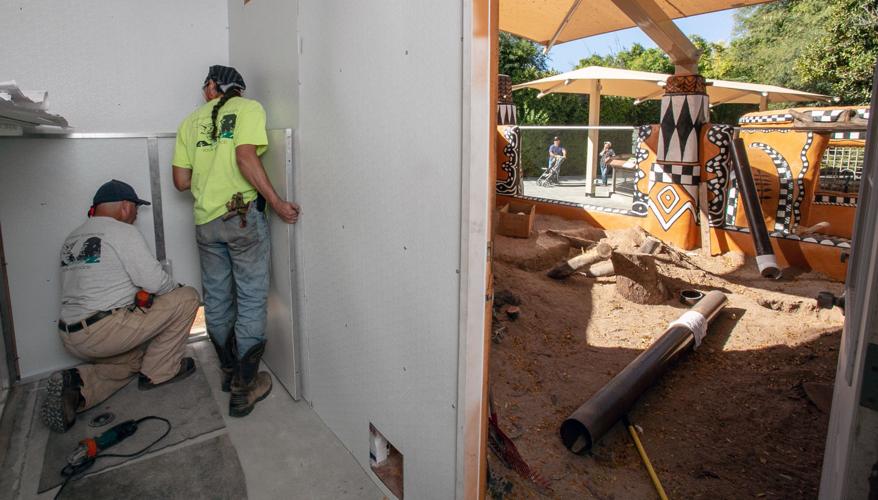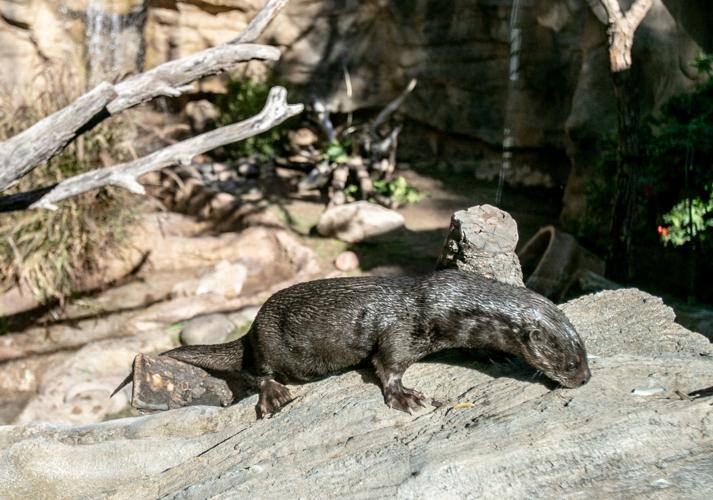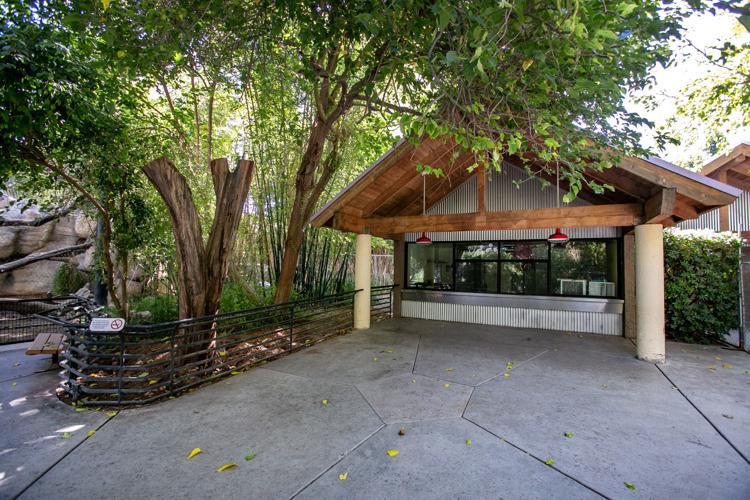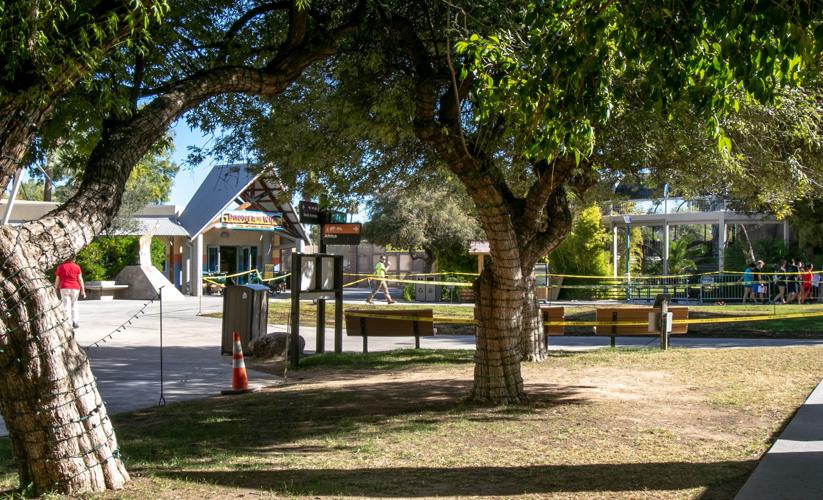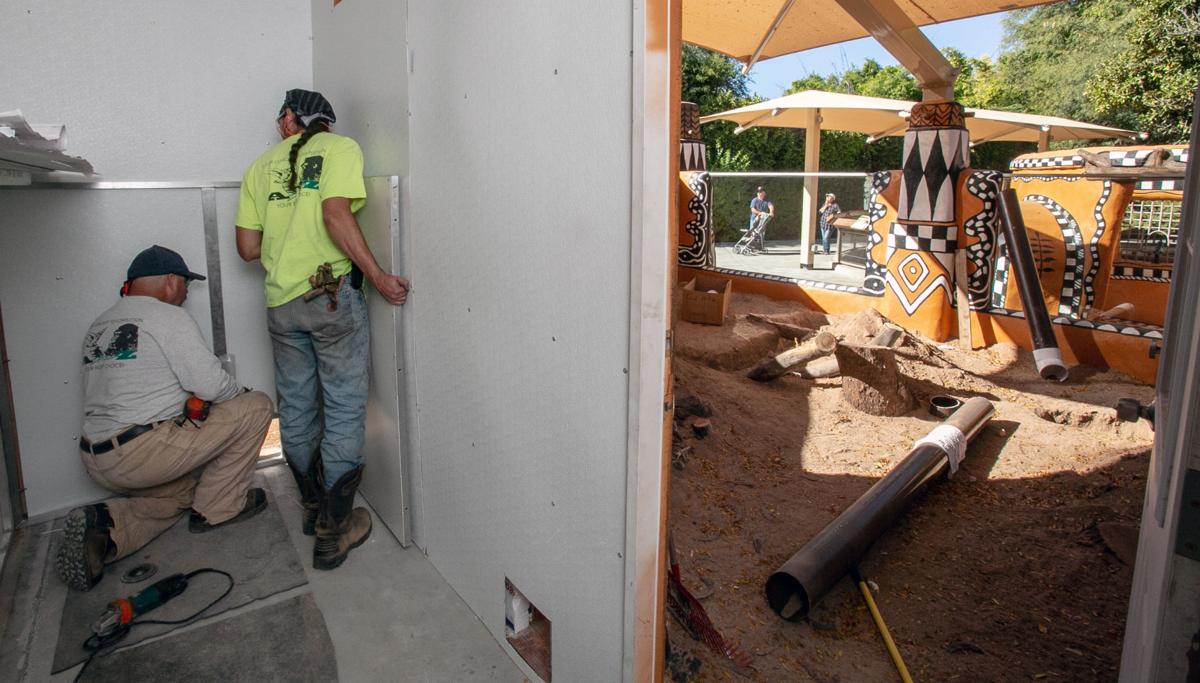Big changes are underway at the Reid Park Zoo, including improvements to existing animal habitats, plans for new exhibits and an increase in staffing, designed to connect visitors with animals like never before.
Last November, Tucson voters approved a ballot initiative that increased the city’s sales tax by one-tenth of 1 percent for the next 10 years. The measure was expected to generate millions of dollars to upgrade the zoo’s aging infrastructure and build new, interactive exhibits.
As of early November, about $7 million in sales tax funds had been collected since Feb. 1. Those funds were made available on July 1, and zoo staff has been “hard at work making a difference for the animals and guests,” Nancy Kluge, Reid Park Zoological Society’s president and CEO, told the Star during a recent tour.
In the months leading up to the funds being made available, zoo staff worked to get bids and find contractors so that work could begin as soon as possible.
The first of several new exhibits, the Temple of Tiny Monkeys, is nearing the end of the design phase with construction set to begin in December. In upcoming months, construction workers will transform a former snack bar in the zoo’s South America area into the ruins of a Mayan temple, which will house four squirrel monkeys.

The old Jaguar Junction is unused and fenced off in this photo taken in November 2018. It will become the new home for Squirrel Monkeys, which will split time between the inside and a remodeled outdoor space at left.
“We’ll be able to tell the story about these spunky, cute animals that are in the rainforest of South America,” Kluge said. “They’re fun, they’re cute. In constant motion.”
The exhibit is expected to open in March, and staff already has a breeding recommendation for the one male and three female squirrel monkeys that will occupy the habitat, said Sue Tygielski, Director of Zoo Operations.
“It’s important in that we’ll be contributing to their species survival plan, but also our guests will have the opportunity to see these teeny-tiny infant primates,” Tygielski said, adding that adult squirrel monkeys typically weigh about 1.5 pounds.
In response to the sales tax passage, the zoo received an influx in donations, with repairs and improvements giving donors more confidence, Kluge said. Two donors have stepped forward to contribute $100,000 each to the Temple of the Tiny Monkeys, which will fund half of the project. Other improvements and new exhibits will be funded 85 percent by sales tax money and 15 percent donations.
“There’s been an outpouring of support from the community,” said Candis Martin, the zoo’s manager of marketing and communications. “People want to be a part of the transformation.”
The Reid Park Zoological Society is working with the city to select an architect and a construction manager for a $30 million expansion project to the west.
The project will include a Tropical Discovery Center, which will house Komodo dragons, fruit bats and siamang — from the gibbons family — and be located next to the education building. The plan also includes a treetop playhouse for children to be located in the spot now occupied by the flamingo lagoon, which will move to the front of the zoo, marking the first step in larger expansion.
The project will also include a makeover to the zoo’s front entry, which will give it a new look and some additional shade.

The entry lawn will eventually house the flamingos to add excitement and a burst of color to the front of the zoo.
The major expansion will take significant time and planning, but Kluge is hopeful that the new exhibits will open in the next few years.
In the meantime, zoo staff has already completed work to repair concrete walkways, replace and paint guardrails and install automatic door openers in the restrooms, cafe and at the exit.
The otter habitat was recently renovated with the addition of a large, man-made log that brings the otters up to eye level with zoo visitors and a large awning to provide shade for the animals and guests. The habitat was designed so that people — especially kids — feel like they’re sharing the the same space with the otters.
“That’s something we’re really trying to look for, is those interactive experiences,” Kluge said. “We’re trying to build those heart connections, so that people understand how amazing these animals are and they want to save them so they’re around.”

An otter sits on a new artificial log and looks for snacks. The log puts the otters at eye level with zoo visitors.
During construction, the otters enjoyed a staycation at the zoo’s new Animal Health Center, but returned to the exhibit earlier this week.
The meerkat habitat has also been expanded, with zoo employees hard at work Wednesday to get the second enclosure completed in time to move the meerkats back this weekend. The expanded habitat has two new viewing windows, and the separate habitats will allow zoo staff to better care for the animals, who are known for having a “very complicated” social structure, Tygielski said.
Zoo staff tries to provide a second habitat for as many species as possible, to give them options when it comes to socializing, Tygielski said.
The zoo’s lion-tailed macaque monkeys were gifted a new tree last week, built out of styrofoam covered in concrete. The maintenance crew built the tree in-house, constructing it in several pieces and moving it into the exhibit. The old tree, which allows macaques to retreat from the public eye, was basically falling apart, Tygielski said.
The operational structure of the zoo’s staff has also changed, with the Reid Park Zoological Society taking over management duties. Before the sales tax measure, the zoo was managed by the Tucson Mayor and City Council, who still maintain certain approvals, such as naming rights for new exhibits.
The zoo has since added about 20 new staff members, including a full-time vet for the first time ever.
“This is huge for us, because it really enables us to ramp up the level of animal care that we provide, but also educational experiences,” Kluge said.
A few of the positions were created as a result of the management change, but the majority of employees were added to the animal care staff and grounds and maintenance crews, Kluge said.

An new artificial tree has been built for for the lion-tailed macaques at the Reid Park Zoo on November 7, 2018.
“When you think about what’s involved in animal care, and training and enrichment, we had adequate staff, but it wasn’t enough to really be able to do the more in-depth and provide that best experience,” Kluge said. “This will also set the tone for when we open new exhibits in the future, to have enough staff to care for those animals.”
The increased staffing has allowed for the addition of daily educational activities. While it used to be hit-or-miss if a docent or zookeeper would be around to answer guest questions, starting Nov. 1, the zoo rolled out animal presentations at 9:45 a.m. and 2 p.m., and zookeeper chats each day at 11 a.m.
Providing opportunities for guests to engage with animals and zoo staff is something the zoological society has always wanted to do, and experiencing an animal up close creates a stronger level of connection and helps drive home the importance of conservation, Kluge said.
“When guests get to talk with an educator or zookeeper, that experience really stays with them,” Tygielski said.

The flamingos at the Reid Park Zoo will move from their long-occupied space deep inside the zoo to a spot just past the zoo’s entryway.


